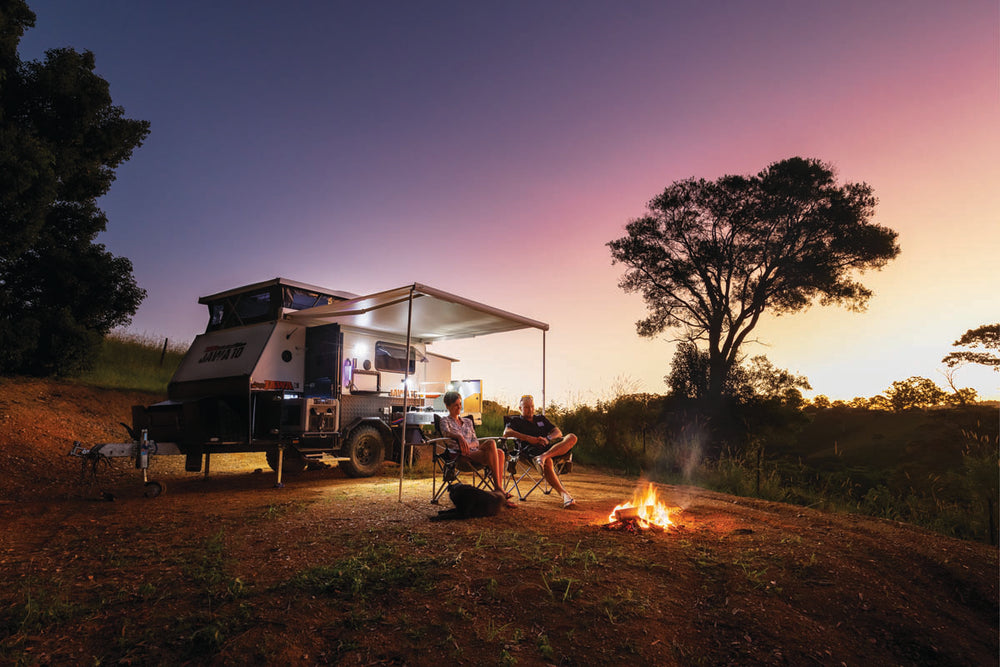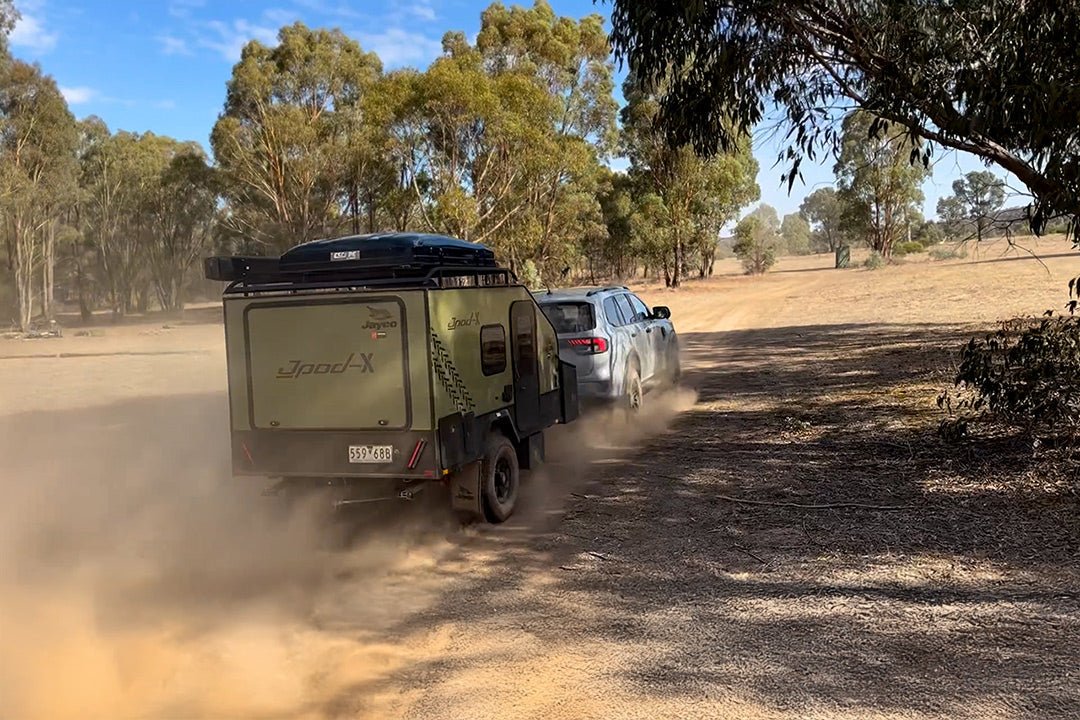Euro Caravans NR Freedom Review

Not too long ago, I was wandering around a regional caravan show looking at all the usual suspects when something different caught my eye. A new name in Australia, Euro Caravans had a range of caravans on display and, ironically, it was their most obvious feature that almost caused me to miss them - the vans are all relatively small in size.
There are currently three models available - the SunSeeker, Glider and NR Freedom. All are built in Poland using a number of familiar manufacturer components - Al-Ko, Dometic, Thetford and Truma. All the new vans have the required electrical and gas compliance certificates, as well as the necessary nearside entry door.
Poland might be a new manufacturing country as far as Australian imports are concerned but central European manufacturers are not unknown here - another importer has been bringing in a successful range of Slovenian-built vans for several years now.
For this review, I took the latest of the Euro caravans to arrive in Australia; the quirkily named NR Freedom.
LAYOUT & DESIGN
It has an external body length of just 3.75m (12ft 4in) and a Tare weight of 870kg, even lighter than many modern camper trailers!
In addition to that, it has a very impressive load capacity of 430kg, but I suspect you’d have to try pretty hard to actually use all that. I understand that in the army, a trailer ball weight has to be light enough so that a soldier can lift the drawbar. The NR Freedom would qualify, with an unladen ball weight of just 45kg. That also makes it very easy to lift the drawbar up to have a look at the chassis and that’s good because it’s a low-riding caravan. Al-Ko is the name stamped on the drawbar, chassis, ball coupling and torsion suspension, so it’s all very familiar. The chassis is quite a minimalist structure, typical of European caravan design, and there are two reasons for that – the van is lightweight to start with, and part of the strength is built into the bodywork. Stabilisers are fitted to each corner of the caravan but the front ones, in particular, are awkward to see and require a bit of poking around to get the winding handle connected properly.
Moulded GRP (fibreglass to you and I) is used for the front, rear and roof panels, with the walls being fibreglass composite. The van’s body style is a bit different to the usual in that the angle of the rear wall matches the front wall, giving the van a parallelogram shape when looking from the side. As with many European caravans, there are double-glazed acrylic windows all-round, and just a plain door. A concertina style insect screen is optional.
On the road, the 1300kg of caravan is barely noticeable and the light overall weight means a huge range of tow vehicles can be used.
Up front, the conventional boot is surprisingly large, containing the spare wheel and two 9kg gas cylinders with a bit of space leftover for items like camp chairs. Given the length and shape of the van, a conventional awning won’t fit well but the other option is a Euro-style framed annexe that will accommodate alfresco living nicely.
KITCHEN/BEDROOM & BATHROOM
Inside, the NR Freedom has quite a simple layout. A small kitchen bench and offside bathroom share the rear wall, and a fridge with a cupboard above takes up the mid-offside space. That leaves the front free for the typical British arrangement of a club-style lounge which converts into a bed at night and has windows all-round. Between the lounge/bed and the entry door is a full-height wardrobe with plenty of hanging space, or the option of removable shelves. The 12V lighting is, surprisingly, halogen but that can easily be converted to LED if needed.
Everything is quite minimalist in size, but that’s to be expected given the length of the van. The dark hues of the timber-look cabinetry seem like a throwback to the decor of a few years ago but it fits in well with the rest of the colour scheme, and the windows and hatch keep the natural light level high. All the windows have the usual integrated blinds and screens, but I could probably do without the pelmet curtains around the front of the van; they just blew around when the windows were open.
Two people can sit quite comfortably around the table and there is a surprising amount of room. Overhead lockers are fitted all around and there’s three small bins under the front window. Both side seats offer plenty of under cushion storage, although part of the offside area is taken by the 35L water tank and the 5L water heater. A point to note is that the standard Euro anti-condensation measures are in place – the hinged ply seat bases have large holes for ventilation and there are off-the-wall panels behind the seat backs.
All the cushions are on the square side but that’s so the bed can be made up easily by lowering the table and fitting the cushions in. It measures 2.1x1.45m (6ft 11in x 4ft 9in). Being a bit lazy, I’m not a big fan of making the bed up with sheets and blankets every night, so I just rolled out my Duvalay as a test and it worked just fine!
In the rear, the kitchen bench is just long enough for a round stainless steel sink and a three-burner cooktop. Benchtop working space is minimal but there are plenty of overhead lockers, shelved cupboards and drawers. The three-way 60L fridge sits on the other side of the bathroom between a shelved cupboard (with a roller shutter door) above and a drawer below. There is more storage than you’d expect in this little van but that is at the expense of a small fridge and no cooking alternative (grill/oven/microwave) to the cooktop.
Given the external size of the bathroom, I expected to find a shower in there but there wasn’t, just a Thetford cassette toilet and a vanity cabinet complete with wash basin, cupboard space and wall mirror. I say I expected one because I have seen some moulded combo units that include a shower. However, anyone staying in caravan parks regularly may use the amenities block but appreciate the cassette toilet for overnight use.
THE BOTTOM LINE
You’d be right in saying that everything about this NR Freedom caravan is small, and sized well below the average Australian caravan. But does that make it a bad proposition? I’d say no, because I suspect that this sort of van will be spending most of its overnight stops in caravan parks, not requiring some of the onboard facilities many of us are used to.
It will be of interest to anyone who wants to tow something very lightweight, like a camper trailer, but doesn’t want any flapping canvas. Additionally, its small size means it treads lightly on the eco front, too.
Measuring up
Pros
- Easily manoeuvrable by hand
- Light weight for towing
- Familiar appliances/components
- Relatively large front boot
- Surprising amount of internal storage
- Nice change from standard Australian designs
Cons
- Small fridge
- No grill/oven/microwave
- Low capacity water tank
- Flimsy feel to some cabinetry
- Bed has be made up every night
The full article appears in Caravan World #555 September 2016. Subscribe today for the latest caravan reviews and news every month!







